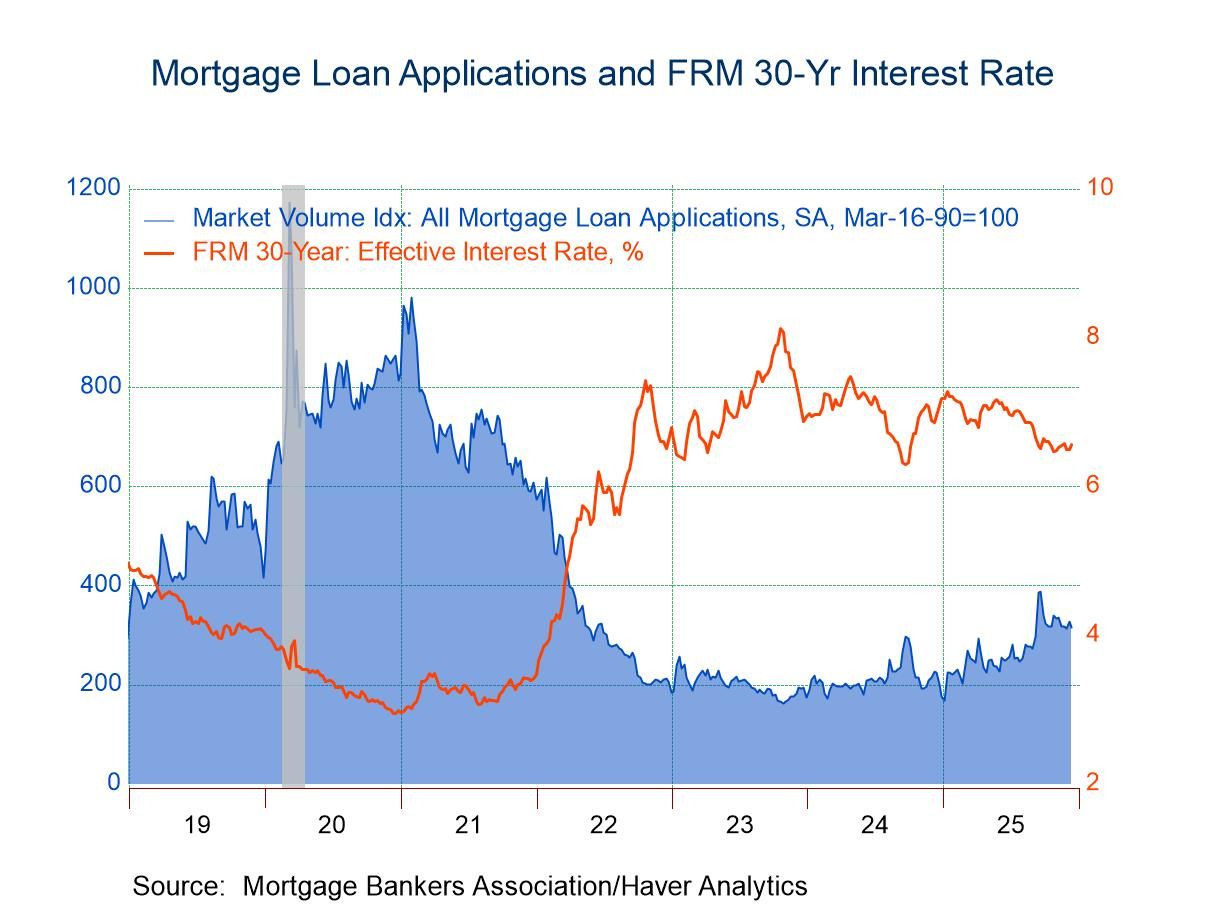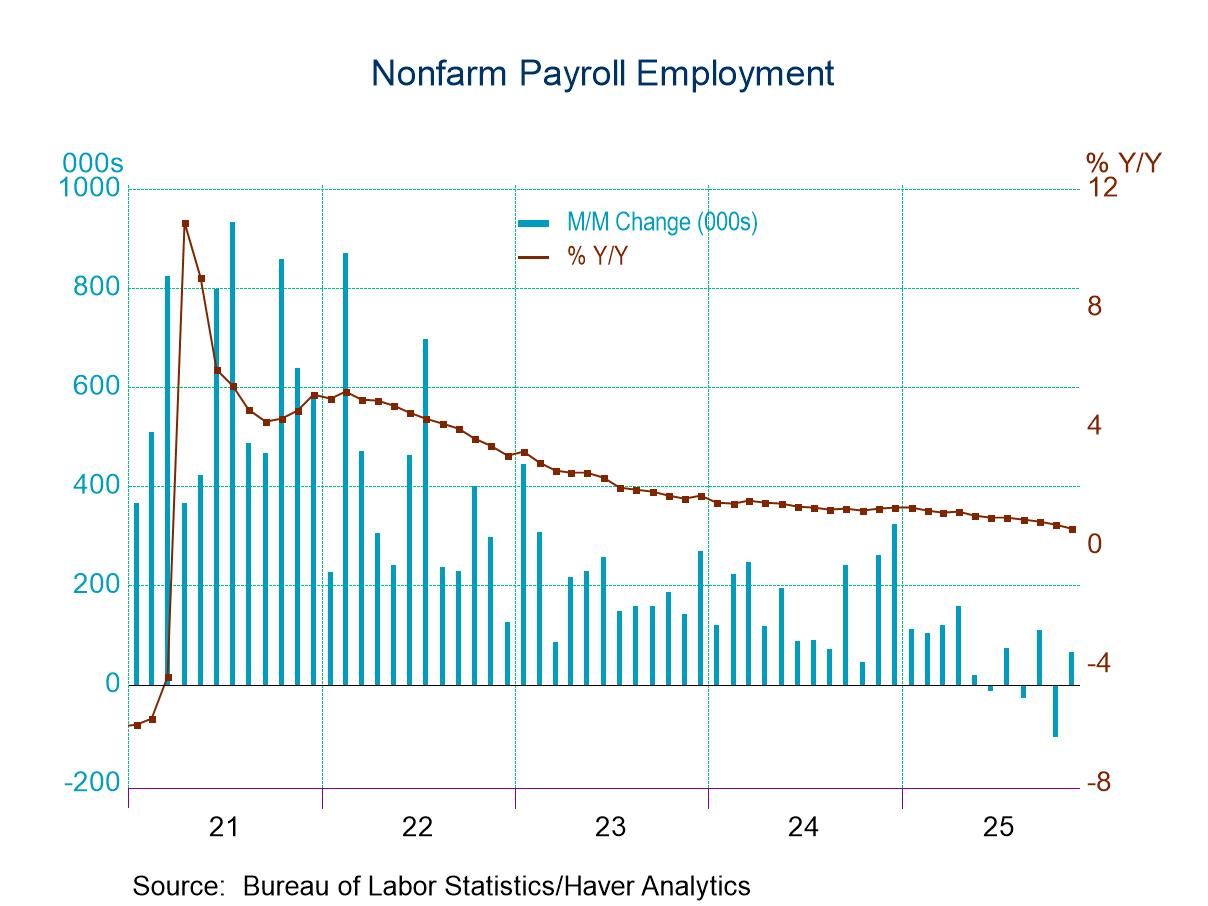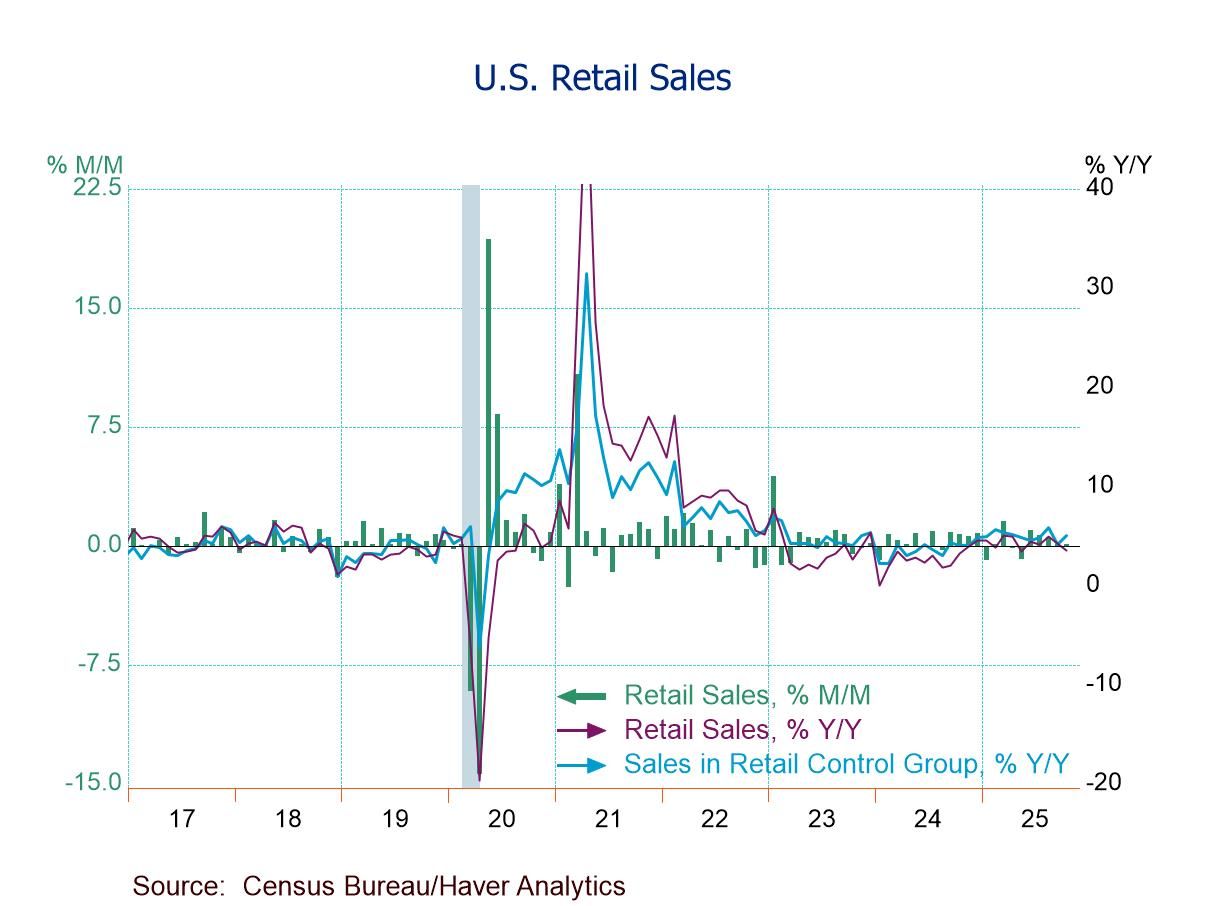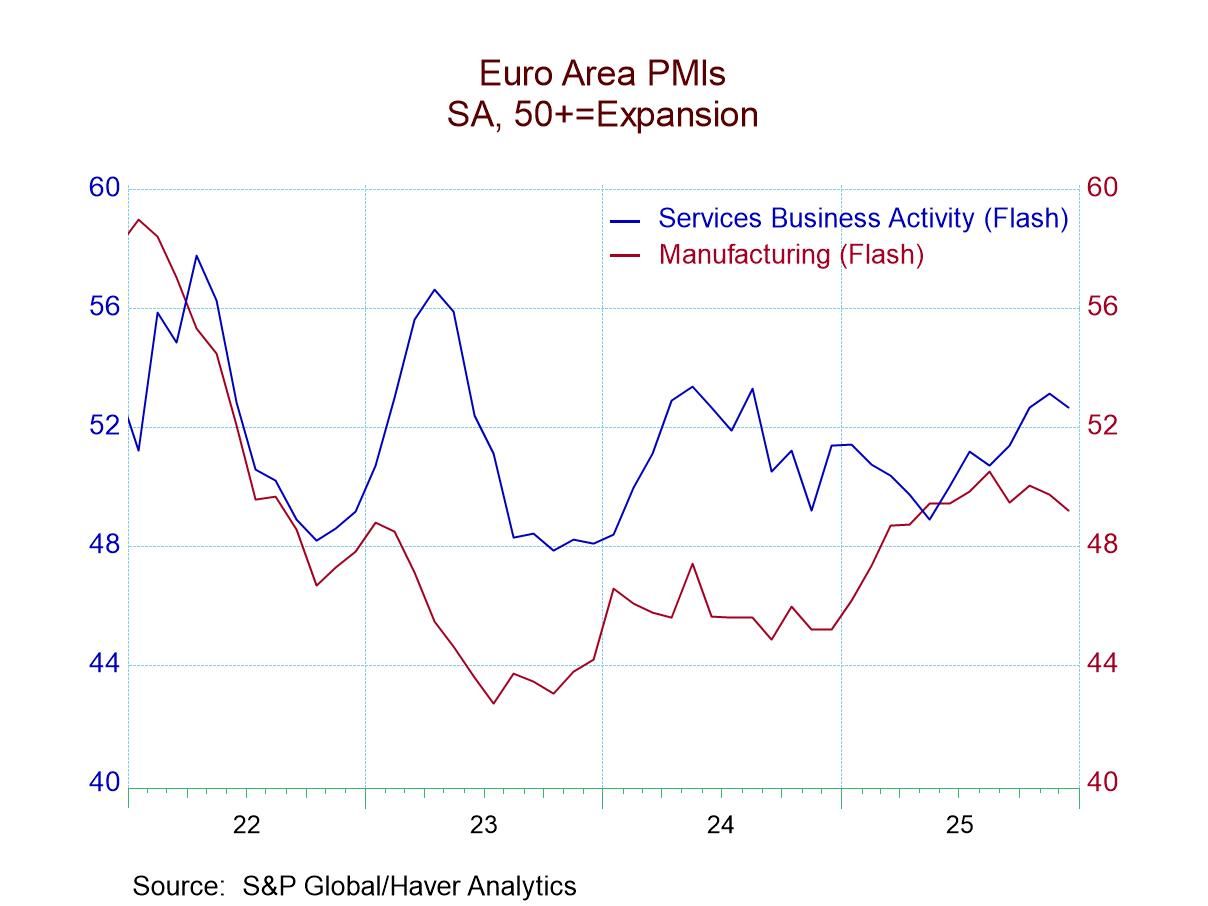 Global| Nov 28 2017
Global| Nov 28 2017U.S. FHFA House Price Increase Moderates
by:Tom Moeller
|in:Economy in Brief
Summary
The Federal Housing Finance Agency's (FHFA) index of U.S. house prices rose 6.3% y/y during September. This compared to a peak 7.1% y/y gain in April. During the last three months, prices improved at a 6.1% annual rate. In September [...]
The Federal Housing Finance Agency's (FHFA) index of U.S. house prices rose 6.3% y/y during September. This compared to a peak 7.1% y/y gain in April. During the last three months, prices improved at a 6.1% annual rate. In September alone, prices rose 0.3%, the weakest rise in three months.
The performance of home prices continued to vary greatly around the country. On the strong side were the Pacific and Mountain regions where prices rose 8.7% y/y and 8.5% y/y, respectively.
These strong y/y gains were followed by the South Atlantic, East North Central, New England, West South Central and West North Central regions. Prices rose roughly 6.0% y/y in these regions.
Slower house price inflation occurred amongst states in the East South Central and the Middle Atlantic regions.
The FHFA house price index is a weighted repeat sales index, measuring average price changes in repeat sales of the same property. An associated quarterly index also includes refinancings on the same kinds of properties. The indexes are based on transactions involving conforming, conventional mortgages purchased or securitized by Fannie Mae or Freddie Mac. Only mortgage transactions on single-family properties are included. The FHFA data are available in Haver's USECON database.
| FHFA U.S. House Price Index, Purchase Only (SA %) |
Sep | Aug | Jul | Sep Y/Y | 2016 | 2015 | 2014 |
|---|---|---|---|---|---|---|---|
| Total | 0.3 | 0.8 | 0.4 | 6.3 | 6.2 | 5.6 | 5.4 |
| Pacific | 0.7 | 1.4 | -0.3 | 8.7 | 8.1 | 8.0 | 9.4 |
| Mountain | 0.8 | 0.3 | 0.7 | 8.5 | 8.0 | 7.9 | 7.2 |
| South Atlantic | 0.1 | 0.8 | 0.6 | 6.2 | 7.2 | 6.5 | 5.8 |
| East North Central | 0.6 | 0.5 | 0.8 | 6.0 | 5.4 | 4.5 | 4.5 |
| New England | 0.6 | 0.2 | 0.5 | 5.8 | 4.0 | 3.6 | 3.1 |
| West South Central | 0.0 | 1.1 | -0.0 | 5.8 | 6.1 | 6.4 | 5.6 |
| West North Central | 0.9 | 0.5 | -0.2 | 5.7 | 5.7 | 4.3 | 4.1 |
| East South Central | -0.4 | 0.5 | 0.4 | 5.1 | 5.2 | 4.8 | 3.5 |
| Middle Atlantic | -0.0 | 0.8 | 0.6 | 4.6 | 3.8 | 2.6 | 2.1 |
|
Mountain: Montana, Idaho, Wyoming, Nevada, Utah,
Colorado, Arizona and New Mexico. |
U.S. Consumer Confidence Strengthens
by Tom Moeller November 28, 2017
The Conference Board Consumer Confidence Index increased 2.6% during November (18.4% y/y) to 129.5 following an upwardly revised 4.6% October improvement. The index was at its highest level since November 2000. The Action Economics Forecast Survey expected a decline in the index this month to 124.0. During the past thirty years, there has been a 70% correlation between the level of consumer confidence and the y/y change in real PCE.
The increase in overall confidence reflected a 3.9% gain (20.0% y/y) in the expectations index to 113.3. The present situation index reading improved 1.2% (16.6% y/y) to 153.9.
The percentage of respondents indicating that business conditions are "good" rose to 34.9%, the highest level since December 2000. The percentage saying business conditions are "bad" fell to a recovery low of 12.7%. The 37.1% of respondents saying that jobs are "plentiful" was a 16-year high. The percentage claiming jobs are "hard to get" fell to a 16-year low of 16.9%. These readings of labor market conditions led a labor market differential (plentiful minus hard to get) of 20.2 percentage points, the highest since 2001. This differential is 97% inversely related to the unemployment rate.
The percentage expecting business conditions to improve over the next six months improved modestly to 22.4%, but remained well below the 26.9% March peak. The percentage expecting more jobs in six months rebounded to 22.6%, the most since March, following a sharp October decline. The percentage expecting incomes to strengthen at 20.1% remained below the March high of 22.5%.
The expected inflation rate in twelve months eased m/m to 4.5% and equaled the lowest level since February 2005. The percentage expecting higher interest rates over the next twelve months rose slightly m/m to 64.3%, but remained below the March high of 72.2%. An increased 6.9% expected to buy a home, up versus 6.0% during all of last year and 5.6% in 2015.
Confidence amongst individuals over aged 55 rose 43.1% y/y to a seventeen year high. Confidence amongst those aged 35-54 increased 8.4% y/y, but was below the October peak. Confidence amongst those under age 35 rose 0.9% y/y, also to the highest level since 2000.
The Consumer Confidence data is available in Haver's CBDB database. The total indexes appear in USECON, and the market expectations are in AS1REPNA
| Conference Board (SA, 1985=100) | Nov | Oct | Sep | Y/Y % | 2016 | 2015 | 2014 |
|---|---|---|---|---|---|---|---|
| Consumer Confidence Index | 129.5 | 126.2 | 120.6 | 18.4 | 99.8 | 98.0 | 86.9 |
| Present Situation | 153.9 | 152.0 | 146.9 | 16.6 | 120.3 | 111.7 | 87.4 |
| Expectations | 113.3 | 109.0 | 103.0 | 20.0 | 86.1 | 88.8 | 86.6 |
| Consumer Confidence By Age Group | |||||||
| Under 35 Years | 139.8 | 127.2 | 127.5 | 0.9 | 122.4 | 116.0 | 106.6 |
| Aged 35-54 Years | 125.7 | 135.0 | 125.8 | 8.4 | 106.2 | 103.9 | 92.4 |
| Over 55 Years | 129.8 | 116.1 | 113.4 | 43.1 | 84.6 | 84.1 | 73.8 |
U.S. Gasoline Prices Ease; Crude Costs Rise
by Tom Moeller November 28, 2017
Retail gasoline prices declined last week to $2.53 per gallon (+17.6% y/y) following a slip to $2.57 in the prior week. Haver Analytics constructs factors adjusting for the seasonal variation in gasoline pump prices. The seasonally adjusted gasoline pump price was fairly steady at $2.72 per gallon, near the highest level since December 2014.
WTI crude oil prices increased to $57.51 per barrel last week (20.9% y/y) from $55.82 in the prior week. Prices rose to $58.11 per barrel yesterday. Brent crude oil prices increased to $62.62 per barrel last week and were $63.25 per barrel yesterday.
Natural gas prices eased last week to $3.01/mmbtu (+9.1% y/y y) then fell to $2.82 yesterday.
In the week ended November 10, gasoline demand rose 1.6% y/y, while total petroleum product improved 0.5% y/y. Gasoline inventories fell 5.1% y/y, while inventories of all petroleum products declined 5.3% y/y. Crude oil input to refineries improved 3.2% y/y in the last four weeks.
The energy price data are reported by the U.S. Department of Energy. The petroleum demand and inventory figures are from the Oil & Gas Journal Weekly. These data can be found in Haver's WEEKLY database. The daily figures are in DAILY and greater detail on prices, demand and production, along with regional breakdowns, are in OILWKLY.
| Weekly Energy Prices | 11/27/17 | 11/20/17 | 11/13/17 | Y/Y % | 2016 | 2015 | 2014 |
|---|---|---|---|---|---|---|---|
| Retail Gasoline ($ per Gallon, Regular) | 2.53 | 2.57 | 2.59 | 17.6 | 2.31 | 2.03 | 2.30 |
| Light Sweet Crude Oil, WTI ($ per bbl.) | 57.51 | 55.82 | 57.05 | 20.9 | 43.22 | 48.90 | 93.64 |
| Natural Gas ($/mmbtu, LA, WSJ) | 3.01 | 3.08 | 3.12 | 9.1 | 2.49 | 2.62 | 4.37 |
Tom Moeller
AuthorMore in Author Profile »Prior to joining Haver Analytics in 2000, Mr. Moeller worked as the Economist at Chancellor Capital Management from 1985 to 1999. There, he developed comprehensive economic forecasts and interpreted economic data for equity and fixed income portfolio managers. Also at Chancellor, Mr. Moeller worked as an equity analyst and was responsible for researching and rating companies in the economically sensitive automobile and housing industries for investment in Chancellor’s equity portfolio. Prior to joining Chancellor, Mr. Moeller was an Economist at Citibank from 1979 to 1984. He also analyzed pricing behavior in the metals industry for the Council on Wage and Price Stability in Washington, D.C. In 1999, Mr. Moeller received the award for most accurate forecast from the Forecasters' Club of New York. From 1990 to 1992 he was President of the New York Association for Business Economists. Mr. Moeller earned an M.B.A. in Finance from Fordham University, where he graduated in 1987. He holds a Bachelor of Arts in Economics from George Washington University.






